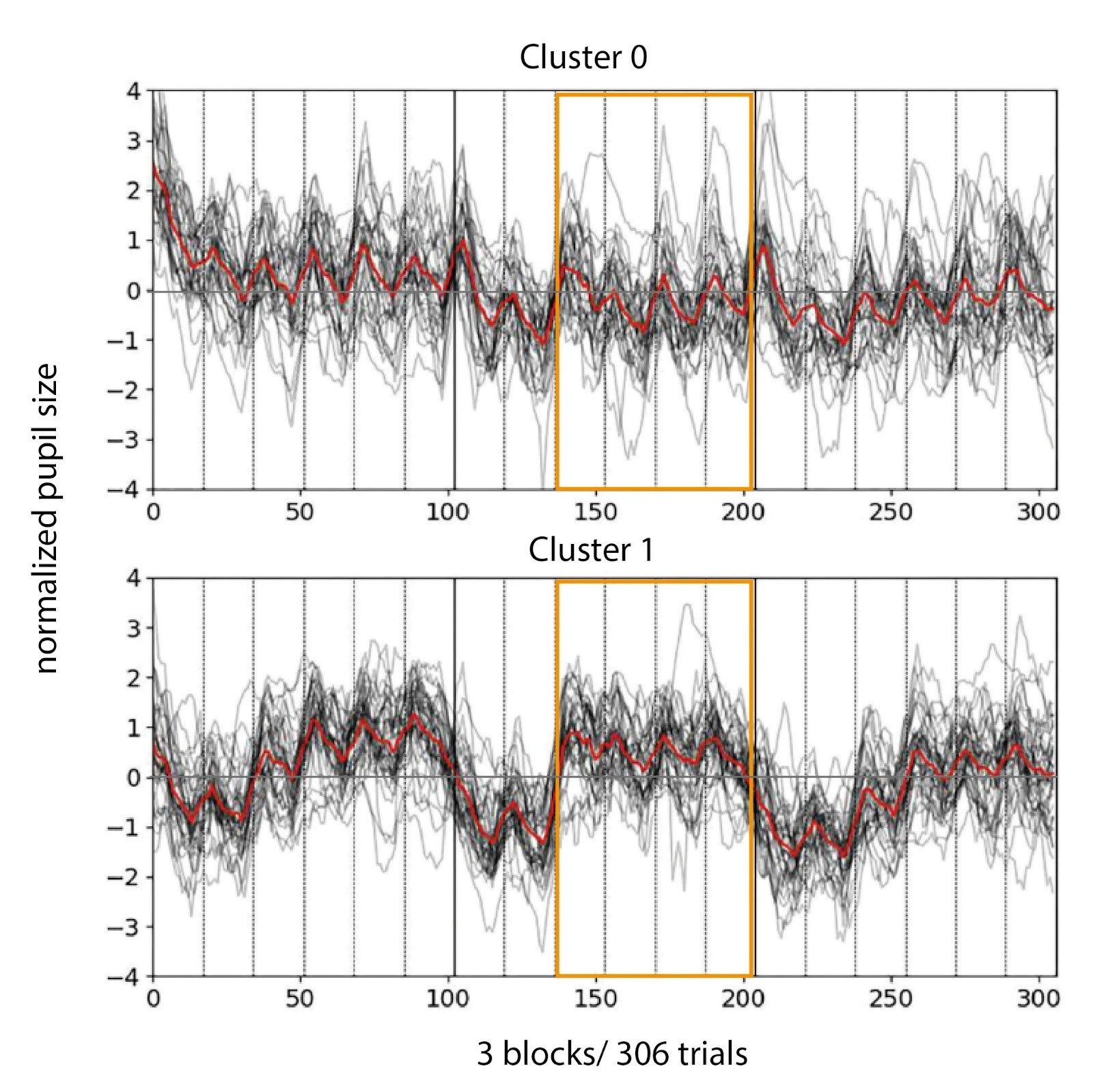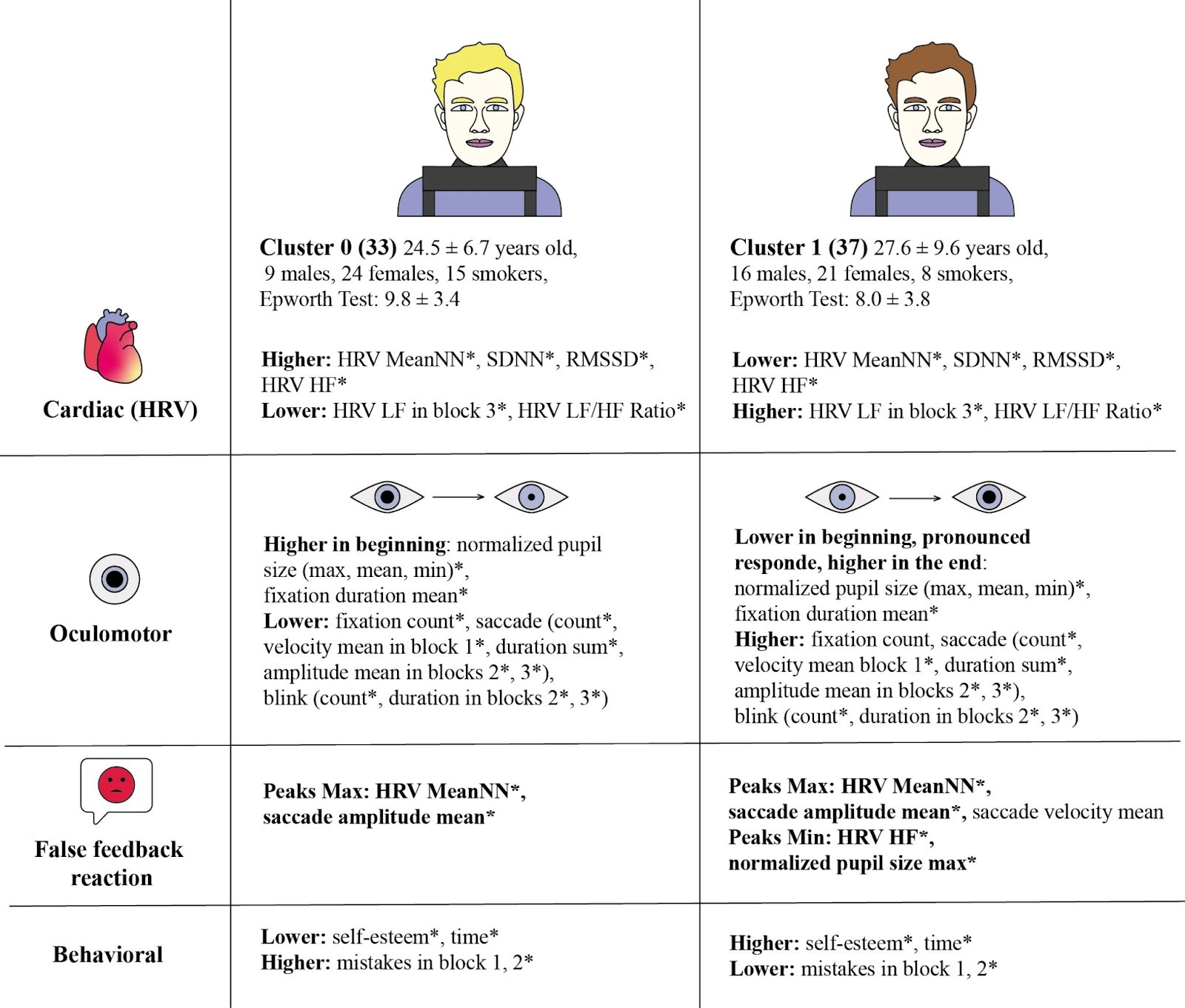Smoking Habit Affects Response to False Feedback

A team of scientists at HSE University, in collaboration with the Institute of Higher Nervous Activity and Neurophysiology of the Russian Academy of Sciences, studied how people respond to deception when under stress and cognitive load. The study revealed that smoking habits interfere with performance on cognitive tasks involving memory and attention and impairs a person’s ability to detect deception. The study findings have been published in Frontiers in Neuroscience.
In today’s world of information overload, one must remain vigilant and quickly adapt to changing circumstances to avoid deception or falling into the trap of fake information. Understanding individuals' ability to cope with stress and detect deception in challenging situations, alongside the related response of their body and brain, has become an important scientific objective today.
A group of researchers at HSE University and the Institute of Higher Nervous Activity and Neurophysiology of the Russian Academy of Sciences analysed people's responses to stress induced by cognitive engagement and examined their ability to detect deception attempts.
Seventy people participated in the experiment, completing memory and attention tasks of increasing complexity. Participants were instructed to view images of coloured balloons and compare each with the preceding one to identify colour matches. As the difficulty level increased, participants had to memorise more balloons and colours. Immediate feedback was provided after each response. Midway through the experiment, participants were given deceptive feedback, such as being told they made a mistake when their answer was actually correct.
Throughout the experiment, the researchers recorded participants' physiological responses and pupil dilation. Pupils respond to changes in the sympathetic ('fight or flight') and parasympathetic (relaxation) systems and are directly linked to cognitive processes; during cognitive stress, pupils dilate. Machine learning algorithms were used to classify participants into two clusters based on how their pupils reacted to increasingly complex tasks.

Next, the authors used machine learning to analyse a variety of physiological and behavioural parameters to identify differences between the two clusters of participants. The analysis considered individual data on health, the presence of chronic conditions, lifestyle factors, harmful habits (including smoking), and tendencies toward depression and anxiety disorders. During task performance, participants had their heart rate, skin conductance, and breathing monitored as polygraph parameters. In addition, the analysis included the speed of task completion, the number of errors made, and participants' self-esteem levels after completing the experiment.

Evgeniia Alshanskaia
'We were the first to employ dynamic pupillometry, which measures pupil dilation, to simultaneously analyse a wide range of physiological and neurological parameters, along with psychological factors. Changes in pupil size directly indicate how a person adapts to a stressful situation, revealing when they are relaxed and when they are mobilised. Thanks to advanced technology, we were able to process the entire dataset and identify patterns that would have been impossible to detect manually,' according to Evgeniia Alshanskaia, co-author of the study and Junior Research Fellow at the Institute for Cognitive Neuroscience.
The researchers obtained interesting results: in one of the clusters, participants exhibited a less pronounced response to stress, along with differing heart rate parameters and oculomotor behaviour, compared to the other cluster. At the same time, the former cluster answered the questions more quickly but made more mistakes, resulting in a lower self-assessment of their performance. This cluster included a higher number of smokers and individuals prone to excessive daytime sleepiness. These two parameters were found to differ significantly between the two clusters of participants. The researchers attribute the differences to the effects of nicotine on the body.

'Nicotine affects acetylcholine receptors throughout the body and the brain. Acetylcholine is the first neurotransmitter ever discovered. It helps control muscle movement, regulates heartbeat and breathing, and modulates pupil response, while also playing a crucial role in cognitive processes. It affects how we respond to and process information. When a person smokes, nicotine “tricks” these receptors into functioning improperly. On one hand, nicotine induces a relaxed state; on the other hand, it alters the connection between the brain and the body, making it more difficult to respond appropriately to stressful situations. Attention does not require relaxation and calmness; instead, it relies on optimal levels of stress and alertness,' explains Alshanskaia.
According to the authors, daytime sleepiness may also be linked to the exposure of nicotinic acetylcholine receptors to nicotine. These receptors regulate the activation and inhibition of neurons, modulate dopamine release, and influence the functions of the dorsolateral prefrontal cortex, which is responsible for planning and executive functions. 'Acetylcholine and its receptors represent one of the most significant areas of contemporary neurobiological research,' the authors emphasise.
The study's findings further highlight the serious impact of smoking on human health. These findings are also important for developing individualised strategies to enhance cognitive resilience under conditions of stress and information overload. Additionally, they can be valuable for educational purposes and learning tasks, as they contribute to a better understanding of the optimal levels of stress and cognitive load necessary for successful learning, performance, and resilience in an unpredictable world.
See also:
HSE Psycholinguists Launch Digital Tool to Spot Dyslexia in Children
Specialists from HSE University's Centre for Language and Brain have introduced LexiMetr, a new digital tool for diagnosing dyslexia in primary school students. This is the first standardised application in Russia that enables fast and reliable assessment of children’s reading skills to identify dyslexia or the risk of developing it. The application is available on the RuStore platform and runs on Android tablets.
Physicists Propose New Mechanism to Enhance Superconductivity with 'Quantum Glue'
A team of researchers, including scientists from HSE MIEM, has demonstrated that defects in a material can enhance, rather than hinder, superconductivity. This occurs through interaction between defective and cleaner regions, which creates a 'quantum glue'—a uniform component that binds distinct superconducting regions into a single network. Calculations confirm that this mechanism could aid in developing superconductors that operate at higher temperatures. The study has been published in Communications Physics.
Neural Network Trained to Predict Crises in Russian Stock Market
Economists from HSE University have developed a neural network model that can predict the onset of a short-term stock market crisis with over 83% accuracy, one day in advance. The model performs well even on complex, imbalanced data and incorporates not only economic indicators but also investor sentiment. The paper by Tamara Teplova, Maksim Fayzulin, and Aleksei Kurkin from the Centre for Financial Research and Data Analytics at the HSE Faculty of Economic Sciences has been published in Socio-Economic Planning Sciences.
Larger Groups of Students Use AI More Effectively in Learning
Researchers at the Institute of Education and the Faculty of Economic Sciences at HSE University have studied what factors determine the success of student group projects when they are completed with the help of artificial intelligence (AI). Their findings suggest that, in addition to the knowledge level of the team members, the size of the group also plays a significant role—the larger it is, the more efficient the process becomes. The study was published in Innovations in Education and Teaching International.
New Models for Studying Diseases: From Petri Dishes to Organs-on-a-Chip
Biologists from HSE University, in collaboration with researchers from the Kulakov National Medical Research Centre for Obstetrics, Gynecology, and Perinatology, have used advanced microfluidic technologies to study preeclampsia—one of the most dangerous pregnancy complications, posing serious risks to the life and health of both mother and child. In a paper published in BioChip Journal, the researchers review modern cellular models—including advanced placenta-on-a-chip technologies—that offer deeper insights into the mechanisms of the disorder and support the development of effective treatments.
Using Two Cryptocurrencies Enhances Volatility Forecasting
Researchers from the HSE Faculty of Economic Sciences have found that Bitcoin price volatility can be effectively predicted using Ethereum, the second-most popular cryptocurrency. Incorporating Ethereum into a predictive model reduces the forecast error to 23%, outperforming neural networks and other complex algorithms. The article has been published in Applied Econometrics.
Administrative Staff Are Crucial to University Efficiency—But Only in Teaching-Oriented Institutions
An international team of researchers, including scholars from HSE University, has analysed how the number of non-academic staff affects a university’s performance. The study found that the outcome depends on the institution’s profile: in research universities, the share of administrative and support staff has no effect on efficiency, whereas in teaching-oriented universities, there is a positive correlation. The findings have been published in Applied Economics.
Physicists at HSE University Reveal How Vortices Behave in Two-Dimensional Turbulence
Researchers from the Landau Institute for Theoretical Physics of the Russian Academy of Sciences and the HSE University's Faculty of Physics have discovered how external forces affect the behaviour of turbulent flows. The scientists showed that even a small external torque can stabilise the system and extend the lifetime of large vortices. These findings may improve the accuracy of models of atmospheric and oceanic circulation. The paper has been published in Physics of Fluids.
Solvent Instead of Toxic Reagents: Chemists Develop Environmentally Friendly Method for Synthesising Aniline Derivatives
An international team of researchers, including chemists from HSE University and the A.N. Nesmeyanov Institute of Organoelement Compounds of the Russian Academy of Sciences (INEOS RAS), has developed a new method for synthesising aniline derivatives—compounds widely used in the production of medicines, dyes, and electronic materials. Instead of relying on toxic and expensive reagents, they proposed using tetrahydrofuran, which can be derived from renewable raw materials. The reaction was carried out in the presence of readily available cobalt salts and syngas. This approach reduces hazardous waste and simplifies the production process, making it more environmentally friendly. The study has been published in ChemSusChem.
How Colour Affects Pricing: Why Art Collectors Pay More for Blue
Economists from HSE University, St Petersburg State University, and the University of Florida have found which colours in abstract paintings increase their market value. An analysis of thousands of canvases sold at auctions revealed that buyers place a higher value on blue and favour bright, saturated palettes, while showing less appreciation for traditional colour schemes. The article has been published in Information Systems Frontiers.


